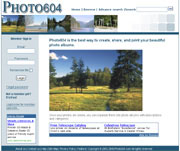Silver Garden Web Studio > Terms
- Web Standards
-
The term web standards can mean different things to different people. For some, it is 'table-free sites', for others it is 'using valid code'. However, web standards are much broader than that. A site built to web standards should adhere to standards (HTML, XHTML, XML, CSS, XSLT, DOM, MathML, SVG etc) and pursue best practices (valid code, accessible code, semantically correct code, user-friendly URLs etc).
In other words, a site built to web standards should ideally be lean, clean, CSS-based, accessible, usable and search engine friendly.
-
- Accessibility
- An accessible website is accessible and usable for everyone, regardless of what hardware and software they are using, and regardless of what they use to navigate on the site.
-
- Search Engine
- On the Internet the phrase usually refers to the large databases of Web sites that are automatically generated. These Internet search engines use a software robot or spider that seeks out and indexes Web sites. Some search engines include other Internet resources in addition to Web sites. Such as Google.
-
- Presentation
- The look (or sound) of a website.
-
- Structure
- The mandatory parts of a document plus the logical markup of the document’s content.
-
- Markup
- By marking up a document you give the document and its content structure and meaning. On the web, HTML and XHTML is used for markup.
-
- Validation
- Validation is the process of controlling that a document obeys the rules of the language used in the document. You can compare it to checking a text for spelling and grammatical errors.
-
- W3C (World Wide Web Consortium)
- An organization that develops specifications, guidelines, and tools for the Web.
-
- XHTML (Extensible HyperText Markup Language)
- HTML reformulated to follow the rules of XML.
-
- XML (Extensible Markup Language)
- A markup language that looks like HTML, but allows the author to describe data by defining suitable elements.
-

